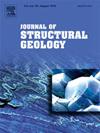Consequences of preexisting faults on rifting patterns: Insights from multichannel seismic data of the Shunde rift, Northern South China Sea
IF 2.6
2区 地球科学
Q2 GEOSCIENCES, MULTIDISCIPLINARY
引用次数: 0
Abstract
Preexisting faults as the products of previous tectonic events are common in the passive continental margins. Recent studies have proposed the existence and significance of the preexisting faults in the Northern South China Sea (NSCS). Here, we present newly acquired 3D high-resolution seismic data across the Shunde Rift that allow us to observe a series of preexisting faults within the basement. The results suggest that the Shunde Rift is characterized by the presence of at least two sets of preexisting faults: a NE trending fault set and an E-W trending fault set. Considering the tectonic events that have occurred since the Mesozoic, we propose that the formation of E-W-trending faults can be attributed to the Late Triassic to Early Jurassic collision between Indochina and South China. Subsequently, NE trending faults developed due to northwestward subduction of the paleo-Pacific plate during Mid Jurassic to Late Cretaceous. Some of preexisting faults display reactivity during the early Cenozoic and exert primary control over the geometry and evolution processes of the Shunde Rift. The inherited faults primarily trend in a NE direction, significantly thinning the upper crust and forming a core complex type extension structure. This suggests that the NE trending preexisting faults may play a more important role in Cenozoic rifting of NSCS compared with E-W preexisting faults.
先存断层对裂陷模式的影响——来自南海北部顺德裂谷多道地震资料的启示
作为以往构造事件的产物,预先存在的断层在被动大陆边缘是常见的。近年来的研究提出了南海北部先存断层的存在及其意义。在这里,我们展示了新近获得的横跨顺德裂谷的三维高分辨率地震数据,使我们能够观察到基底内一系列先前存在的断层。结果表明,顺德裂谷至少存在两组断裂,即NE向断裂集和E-W向断裂集。考虑到中生代以来发生的构造事件,我们认为东西向断裂的形成可归因于晚三叠世至早侏罗世中南碰撞。中侏罗世至晚白垩世,受古太平洋板块向西北俯冲的影响,北东向断裂发育。早新生代时,部分先存断裂表现出反应性,对顺德裂谷的几何构造和演化过程起主要控制作用。所继承的断裂主要向北东向运动,使上地壳明显变薄,形成核杂型伸展构造。这表明,北东向先存断裂在新生代NSCS的裂陷作用可能比东西向先存断裂更重要。
本文章由计算机程序翻译,如有差异,请以英文原文为准。
求助全文
约1分钟内获得全文
求助全文
来源期刊

Journal of Structural Geology
地学-地球科学综合
CiteScore
6.00
自引率
19.40%
发文量
192
审稿时长
15.7 weeks
期刊介绍:
The Journal of Structural Geology publishes process-oriented investigations about structural geology using appropriate combinations of analog and digital field data, seismic reflection data, satellite-derived data, geometric analysis, kinematic analysis, laboratory experiments, computer visualizations, and analogue or numerical modelling on all scales. Contributions are encouraged to draw perspectives from rheology, rock mechanics, geophysics,metamorphism, sedimentology, petroleum geology, economic geology, geodynamics, planetary geology, tectonics and neotectonics to provide a more powerful understanding of deformation processes and systems. Given the visual nature of the discipline, supplementary materials that portray the data and analysis in 3-D or quasi 3-D manners, including the use of videos, and/or graphical abstracts can significantly strengthen the impact of contributions.
 求助内容:
求助内容: 应助结果提醒方式:
应助结果提醒方式:


